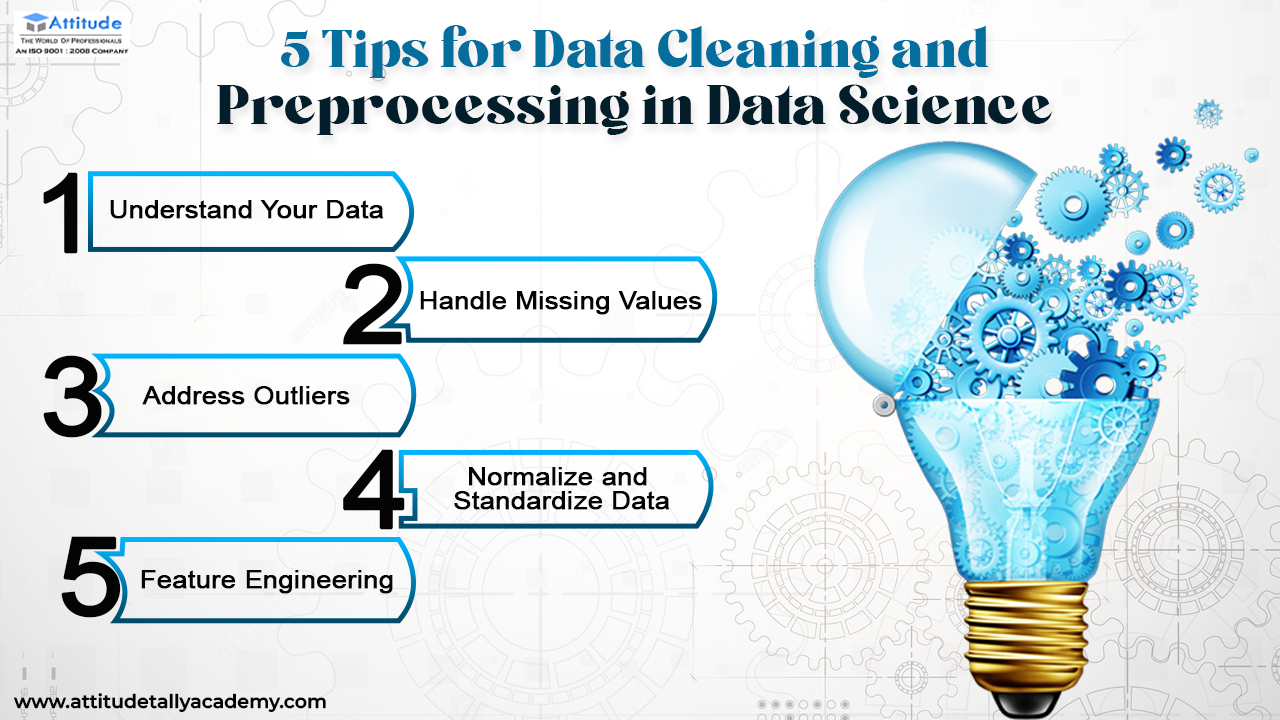Introduction
Welcome to our guide on mastering the art of data cleaning techniques and preprocessing in data science! As a digital marketer or data enthusiast, you understand the power of clean, well-structured data in driving actionable insights and making informed decisions. In this blog, we’ll delve into five essential tips to ensure your data is pristine and ready for analysis.
- Understand Your Data
The foundation of effective data cleaning lies in a deep understanding of your dataset. Take time to explore the structure, types of variables, and relationships within your data. This step helps you identify potential issues early on and tailor your cleaning approach accordingly. Understanding your data also enables you to select the most relevant features for your analysis, leading to more accurate models and insights.
- Handle Missing Values
Missing data can significantly impact the quality and reliability of your analysis. Implement strategies such as imputation (replacing missing values with estimated ones based on other data points), deletion of rows or columns with excessive missing values (if appropriate), or using algorithms that can handle missing values effectively. By addressing missing values, you ensure your analysis is based on a complete and representative dataset.
- Address Outliers
Outliers, or data points that deviate significantly from the rest of the dataset, can skew results and distort patterns. Develop techniques to detect and handle outliers, such as using visualization tools like box plots or scatter plots, applying statistical methods like z-score or interquartile range (IQR) to identify outliers, and deciding whether to remove, transform, or treat outliers based on their impact on your analysis goals.
- Normalize and Standardize Data
Normalization and standardization are crucial steps in data preprocessing to bring features to a common scale and distribution. Normalization scales data between 0 and 1, making it suitable for algorithms sensitive to magnitude differences. Standardization transforms data to have a mean of 0 and a standard deviation of 1, making it robust to outliers and suitable for algorithms like clustering and regression. Choose the method that best suits your analysis objectives and algorithms.
- Feature Engineering
Feature engineering involves creating new features or transforming existing ones to improve model performance and capture meaningful patterns in the data. Techniques such as one-hot encoding for categorical variables, creating interaction or polynomial features, and dimensionality reduction methods like PCA (Principal Component Analysis) can enhance the predictive power of your models. Experiment with different feature engineering approaches to find the most effective ones for your specific use case.
In conclusion,
Mastering data cleaning and preprocessing is fundamental to unlocking the full potential of data science. By following these five tips—understanding your data, handling missing values, addressing outliers, normalizing and standardizing data, and incorporating feature engineering—you’ll elevate your data analysis capabilities and drive actionable insights.
For more insights and advanced techniques on data science cleaning tips and data cleaning techniques, stay tuned to our blog for future updates and in-depth tutorials. Happy data cleaning!
Suggested Link: –




